Grand Designs: The Streets returns for its third instalment for 2023, kicking off at 9pm on Tuesday 16 May on Channel 4. Hosted by self build champion Kevin McCloud, the series is spin of the one-off houses of the regular Grand Designs show, instead concentrating on mult-plot sites.
For Series 3, the show visits a new self and custom build site in York, while returning to previously visited ‘streets’ at Graven Hill in Bicester, and Mary Hill in Glasgow, the pilot scheme of the local council.
Grand Designs: The Streets follows people building with a far more realistic approach than the mega-houses that tend to feature in the main series, with real people building on real budgets.
In York, Kevin follows former schoolteacher Nicola as she project manages her brick build (below), while steelworker Mark and partner Maryellen (main picture) work on a Brazilian-style home on the same street.
In Glasgow, Natasha Huq catches up with the Glasgow project, where the last homes are going up. the final few homes go up.
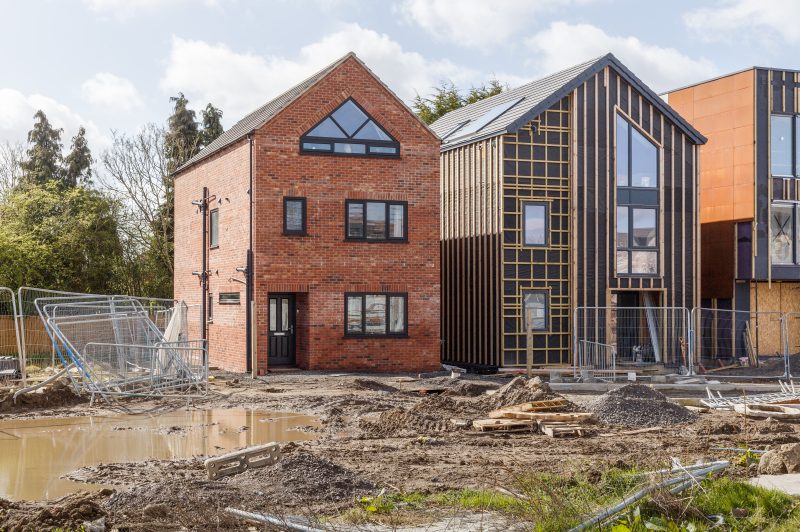
Self builds going up on the multi-plot site in York.
Following its 2019 first visit to Graven Hill, Grand Designs is once more sharing the self build adventures of some of those people building at the UK’s largest self-build and custom-build site, starting on Wednesday 13 April at 9.00pm.
This second series of Channel 4’s Grand Designs: The Streets (available on catch up) sees presenter Kevin McCloud tracking the builds of a cross section of residents as they work to create their very own, tailor-made homes at the site at Graven Hill, as well as other multi-plot sites elsewhere in the country.
Series two differs in format slightly from the first series, which tracked the first ten pioneer residents who broke ground at Graven Hill. This series aims to capture the spirit of community of those building on the self-build streets, and represents a real opportunity for the custom and self build sector to sell this model to the public.
Graven Hill is the brainchild of Cherwell District Council, which took on a former Ministry of Defence site in Bicester to create a 188-hectare development with a range of opportunities to give people more choice in the type of home they want to live in.
Grand Designs: The Streets showcases the opportunities at Graven Hill, where residents from a range of background create their ideal home, whether that be sleek angular constructions or modern interpretations of classic house types.
Kevin McCloud, presenter of Grand Designs: The Streets, said: “Building your own home takes imagination and endeavour, as well as boundless perseverance. Here at Graven Hill, ambition and creativity has resulted in these wondrous homes enjoyed by all who live in them.”
Karen Curtin, managing director of Graven Hill said: “We are so excited to welcome Kevin and Channel 4 back to Graven Hill. Grand Designs: The Streets is the perfect opportunity to show just how far the development has come since the initial experiment with the ten pioneer plots.
“In the first series, we were lucky enough to celebrate a milestone for the UK house building industry by promoting self-build at scale, and this time we are able to showcase more self-build journeys and the development at 400 occupations.
“We have learned a lot over the last few years, diversified our product range and are proud of the community that has evolved. The show provides a platform for us to show exactly what is possible at Graven Hill and highlight that people from all walks of life can build or create the house of their dreams.”
House Lessans in Northern Ireland’s County Down beat a host of homes to be awarded House of the Year by the Royal Institute of British Architects (RIBA), announced in a special four-episode programme of Channel 4’s Grand Designs.
The home, an unassuming yet elegant barn-style house, was built for a very realistic budget of £335,000 on the family’s farm in the rolling Co Down landscape. Scooping the prize demonstrates that quality and design are achievable on a modest budget – good news for any would-be Self Builder, as presenter Kevin McCloud commented that it was built at half the cost of an average but quality Self Build.
The home was in the Down to Earth category of the show, and was designed by Kieran McGonigle of architectural practice McGonigle McGrath. Its L-shaped design utilises a limited colour palette and affordable budget materials, such as concrete bricks, to create a show-stopping house, that offers a new way to build in the countryside.
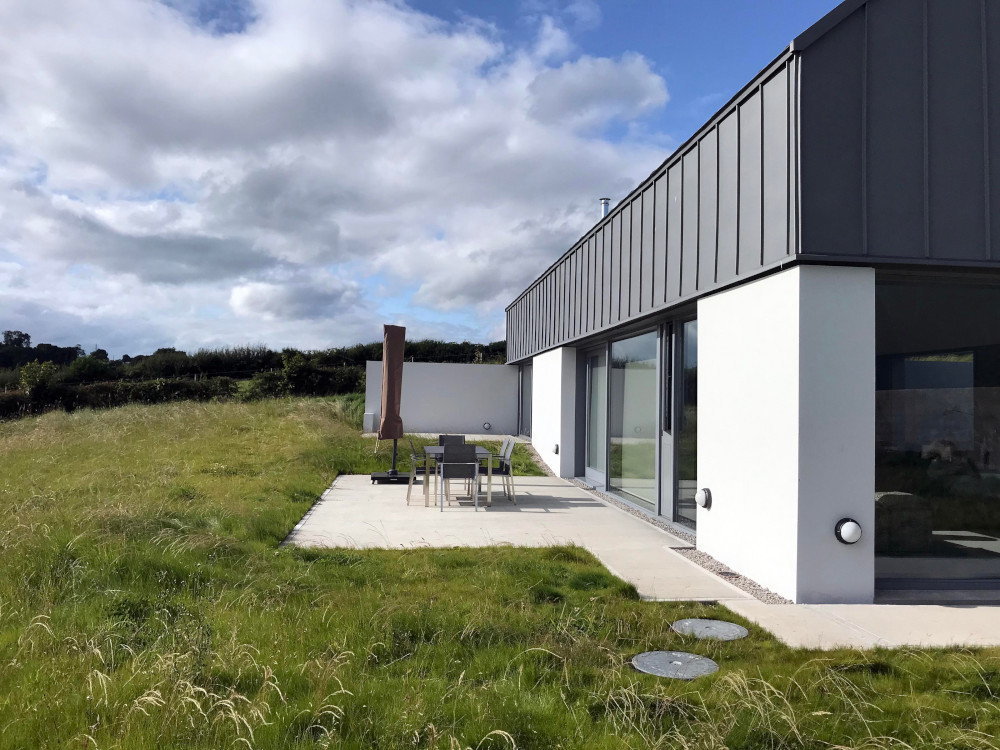
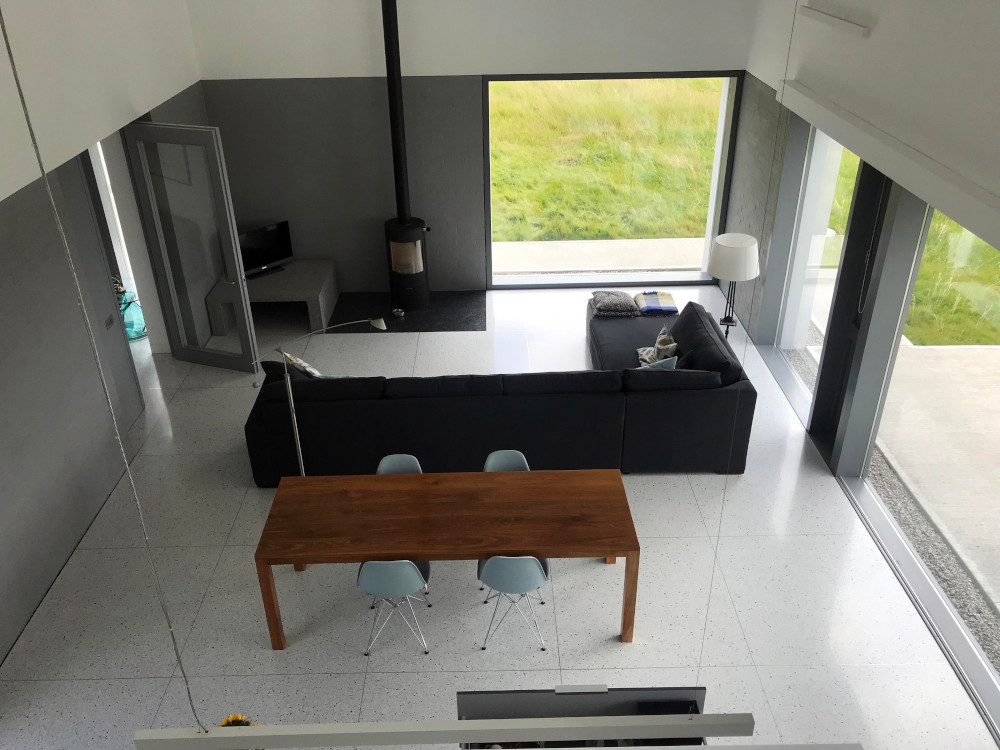
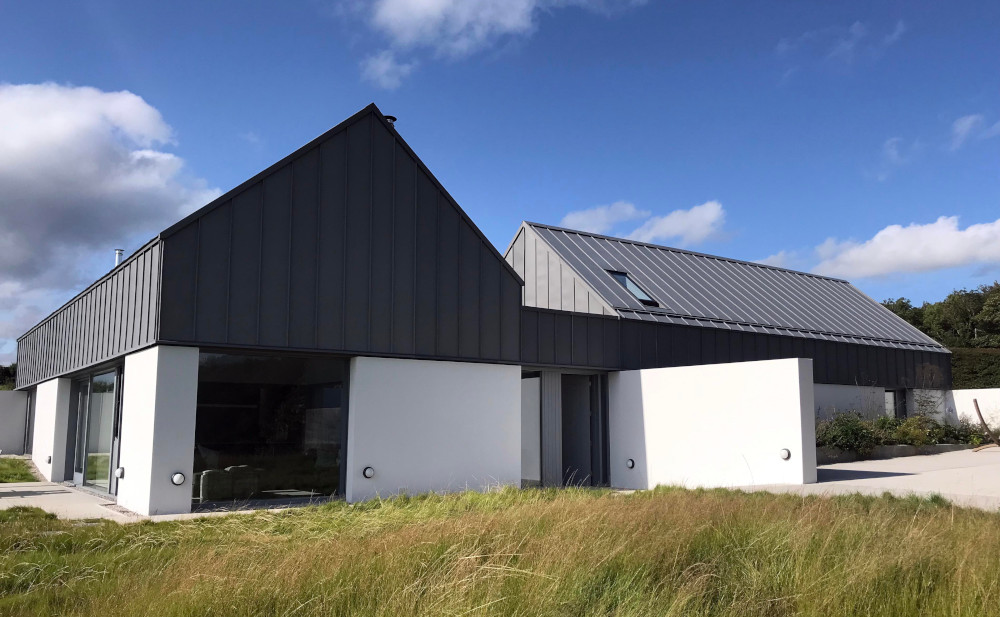
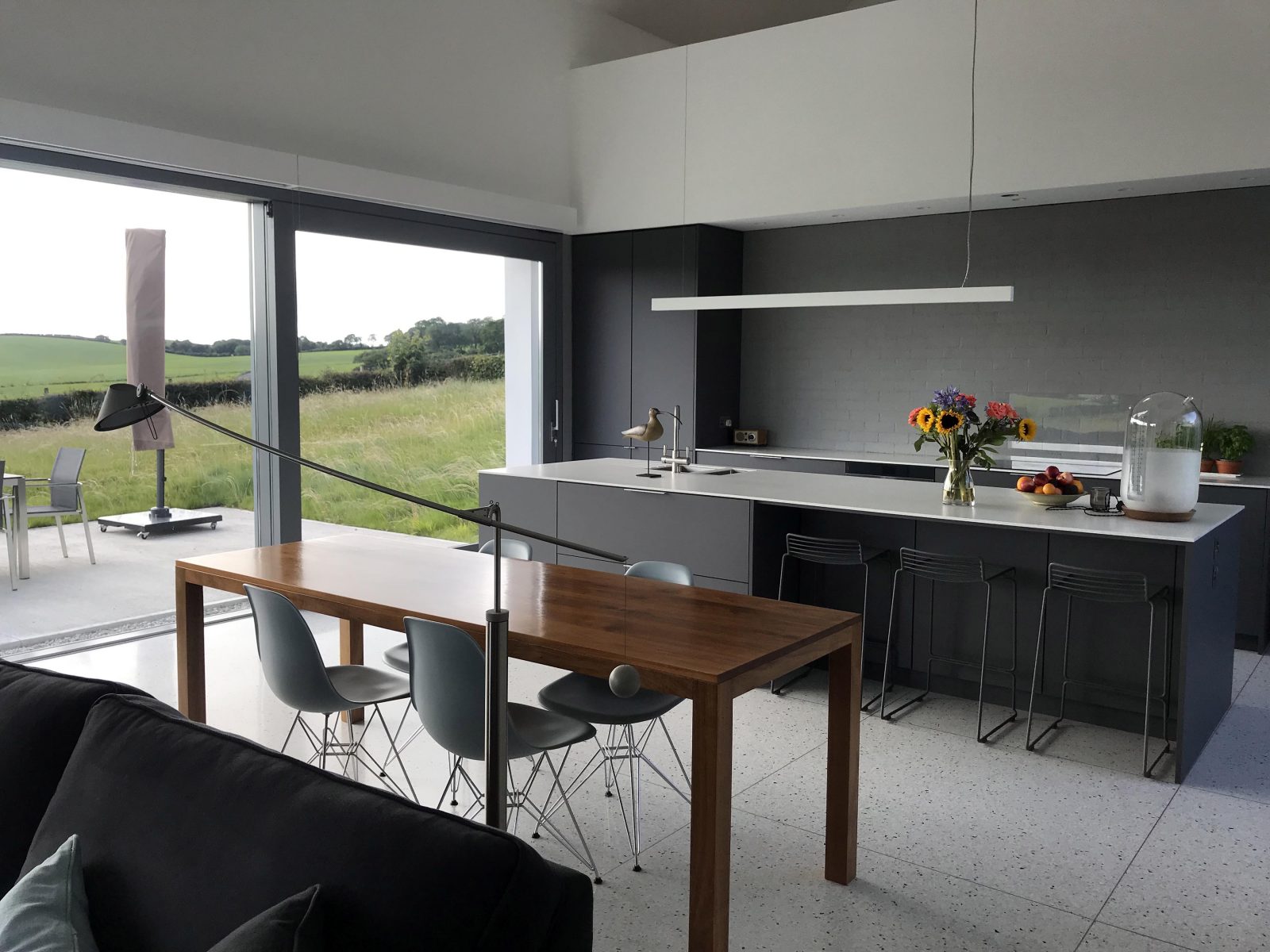
The owners of the property, Sylvia and Michael, wanted to create a paired-down home large enough for visiting grown children to stay in on the remains of the existing small farmstead. The concrete blockwork and and zinc roofs help the building bed into its rural landscape, with the L-shape creating an intimate courtyard space, and double-height ceilings bringing airiness to the design.
RIBA President, Alan Jones, said: “House Lessans demonstrates that life enhancing architecture does not have to cost the earth. Executed with incredible clarity and restraint, McGonigle McGrath have used simple and cheap materials to create a truly bespoke home that resonates with its owners and its context. Even with the tightest of budgets, House Lessans shows that a dream home, designed by a talented architect, can be a reality.”
National Custom and Self Build Week ran from 6-12 May and was a huge success, helping more people access Custom and Self Build, and also flagging up the benefits and challenges of to Government. Here’s an overview of what went on.
At the invitation of Richard Bacon MP and Right to Build Task Force ambassador, NaCSBA held a reception at the House of Commons, bringing some if its members together to be addressed by Housing Minister Kit Malthouse and Kevin McCloud, as well as event sponsor Ecology Building Society.
There was a great atmosphere at the event, with Self Build, Custom Build and community-led housing celebrated, with commitments to do more and offer greater support for the sector from the highest levels.
Read more on NaCSBA’s news pages.
Finally, off the back of National Custom and Self Build Week, Victoria Prentis MP brought a Promoting Self Build debate to the House of Commons.
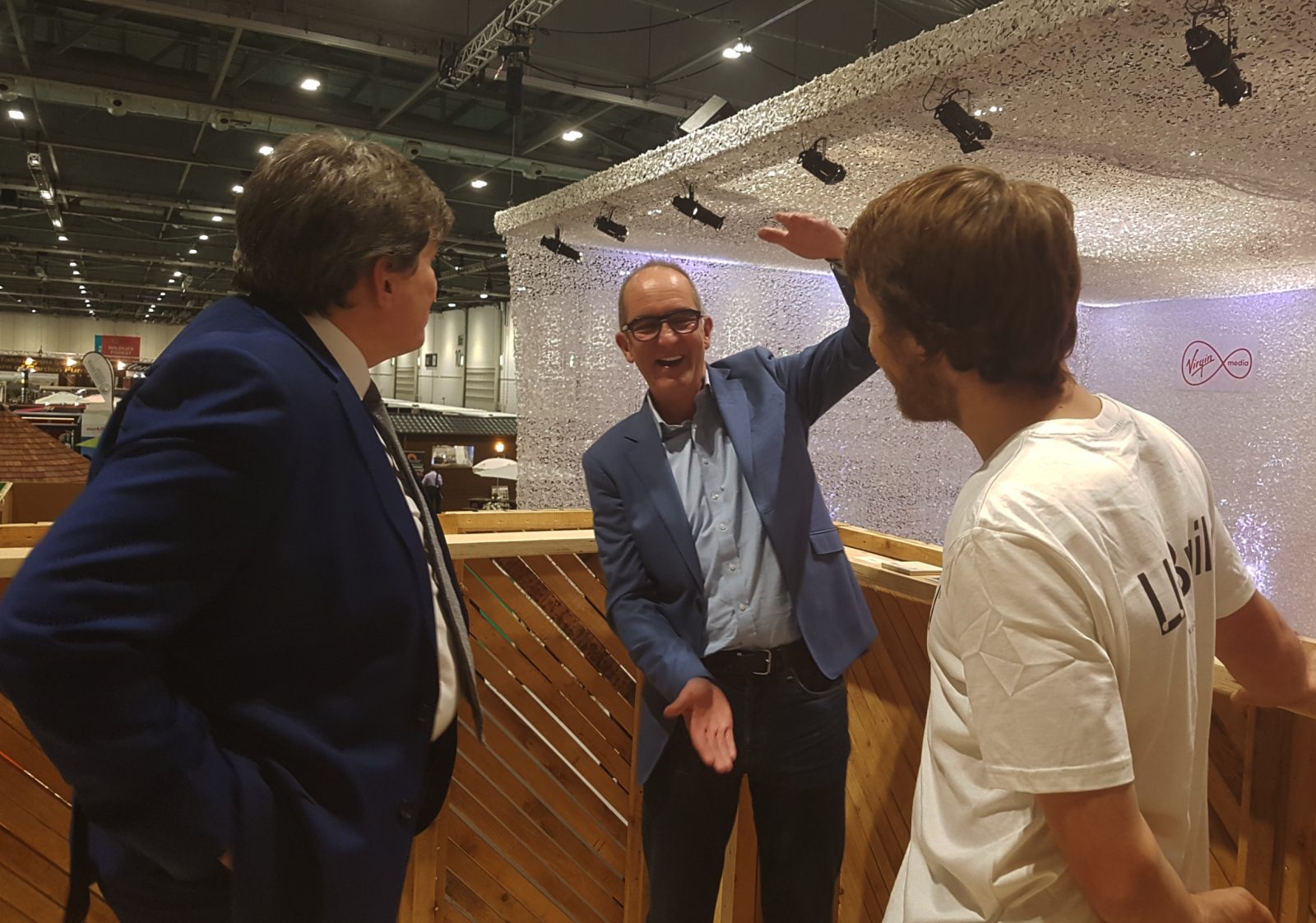
Self Build took centre stage at Grand Designs Live with NaCSBA on the main stage every weekday – to a packed auditorium eager to find out more about how, and where, to build. From the Right to Build registers to finance, NaCSBA’s team spent the week busting the myths that Self Build is Too Hard.
Plus our members joined the Ask the Experts team for the week helping dreamers and doers reach the next stage of their very own Grand Design project.
Also on stage over the week was NaCSBA member Graven Hill – home to the epic Grand Designs: The Street.
Incredibly, the Grand Theatre also saw Kunle Barker, Kevin McCloud and Kit Malthouse share the stage to discuss the benefits of Self Building!
Kit said: “This is National Custom and Self Build Week and we think self build and custom build has a huge potential to expand – other European countries do it much more than we do.”
#ThursdayThoughts: @Kevin_McCloud talks all the things @GrandDesigns The Street @gdlive_UK ahead of tonight's sixth and final episode tonight at 9pm on @Channel4 Read more about the episode here: https://t.co/Vg1IQw5m4d pic.twitter.com/HFwYAZyshH
— Grand Designs Mag (@granddesignsmag) May 9, 2019
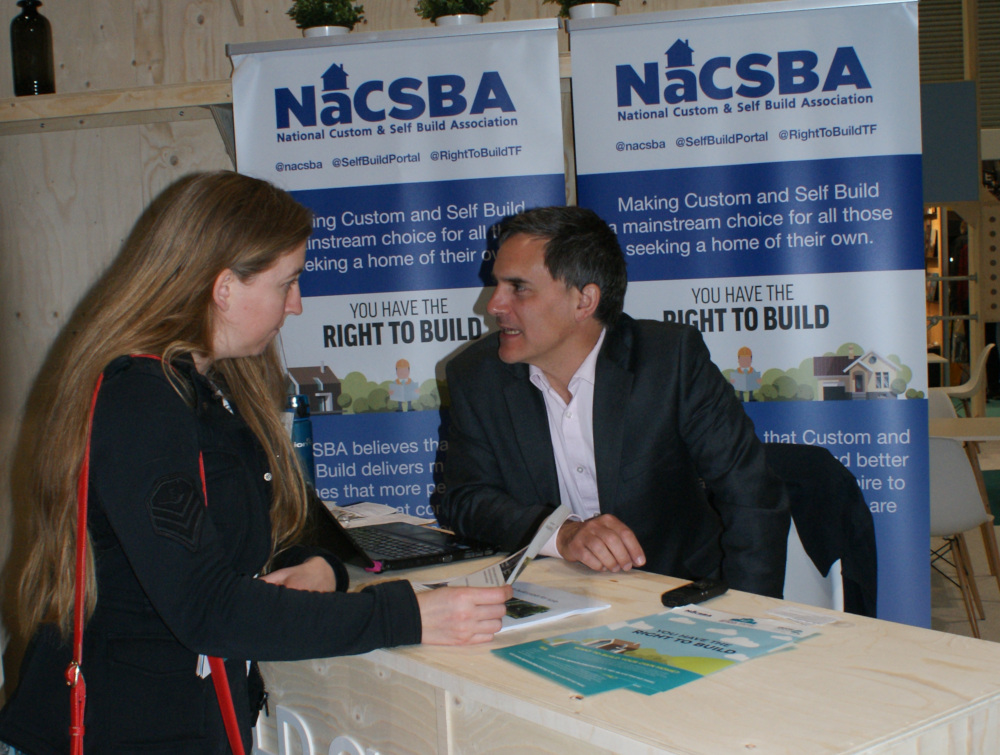
Custom and self-build homes are helping deliver the housing this country needs – a key part of reaching 300,000 a year by the mid-2020s. We’re supporting those who want to build these #MoreBetterFaster homes #SelfBuildWeek pic.twitter.com/5Ex2lGaeOx
— Ministry of Housing, Communities and Local Govt (@mhclg) May 10, 2019
Visitors to the Green Building Store’s Huddersfield Showroom got to find out more about the Right to Build and what it can – and can’t – deliver, while also finding more about the Green Building Store’s range of windows and MVHR systems.
The UK’s biggest Self Build Show Centre opened its doors and attendees to two of its Self Build Academy courses got an extra insight into the week and what it delivers.
The team at the National Self Build and Renovation Centre, the UK’s only permanent Self Build centre pulled out the stops with a discount for anyone signing up to its Self Build Course running through the week, as well as presenting on the Right to Build at the show, the following week.
Off the back of the week Self Build made the news with many papers covering the latest developments, not to mention The Street, including in the Metro, Sunday Times, Times and Financial Times.
NaCSBA would like to say a big thank you to the following companies.
Back in 2010 I went to The Netherlands on a trip (organised by NaCSBA) with a bunch of leaders of local councils and politicians to look at a large self-build town there, Almere, built on reclaimed land near Amsterdam.
The Dutch have always stolen a march on us in terms of housing initiatives. Now, Almere is full of self-built homes, but nine years ago it was already advancing, and I got so excited I had to go and see Channel 4, simply to say ‘it’s amazing what’s happening there, let’s film it’. It was a sort of self-build heaven.
Meanwhile, Cherwell District Council, a small local authority in Bicester, had also been bitten by the Almere bug. In fact, they wanted to replicate Almere and facilitate Britain’s first self-build and custom-build site on a grand scale. They were negotiating with the MOD to buy an old military site as they wanted to see what it would be like if they invited the general public to build their own homes.
It’s this experiment that we’ve been following for the last 5 years in Grand Designs: The Street. In the process, we’ve witnessed the first 10 pioneering households build a street of very different homes at Graven Hill.
But it’s just the start. Ultimately there will be thousands of homes, some social housing, some custom-build as well as self-build. I believe it’s a model that could be copied by local authorities up and down the land.
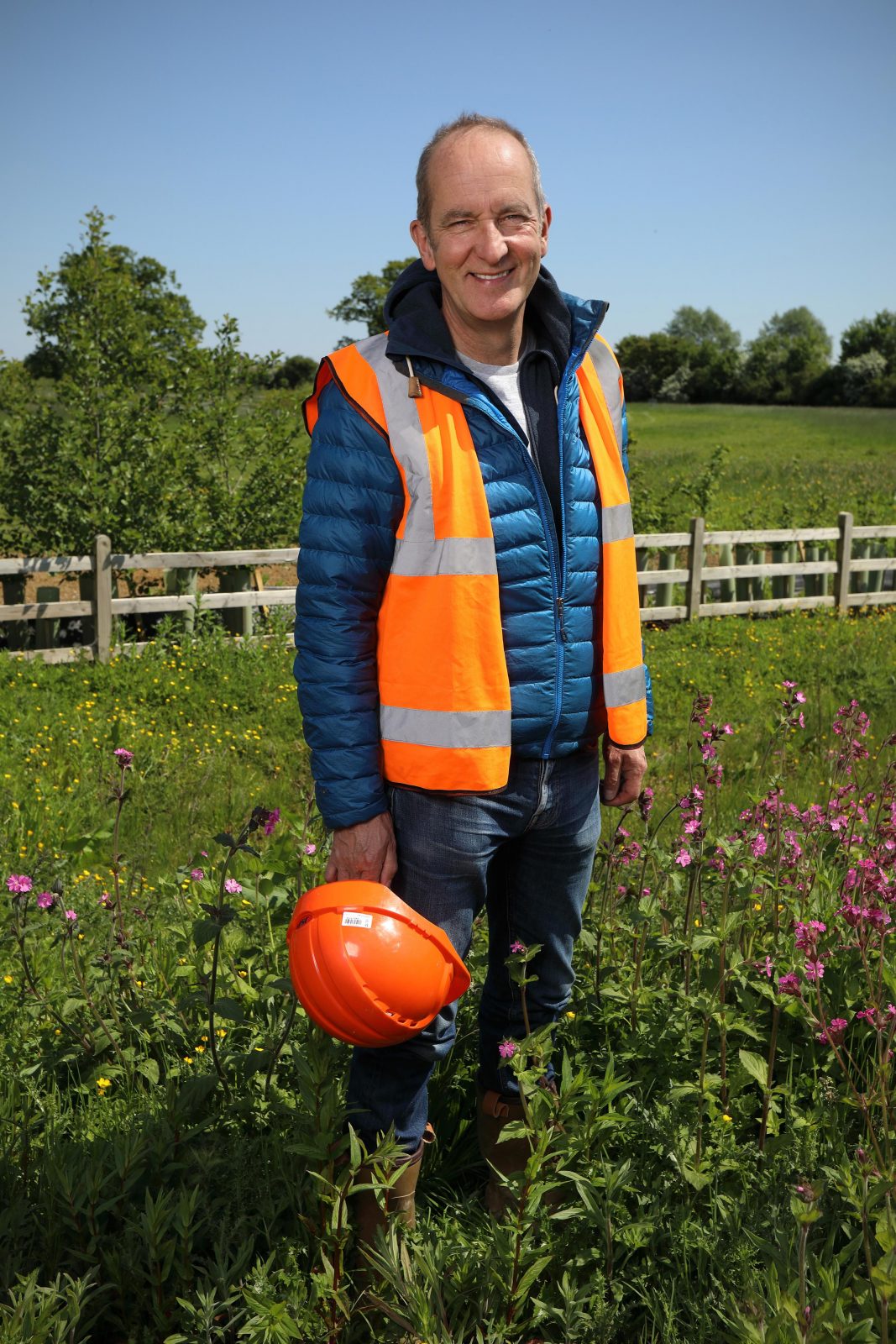
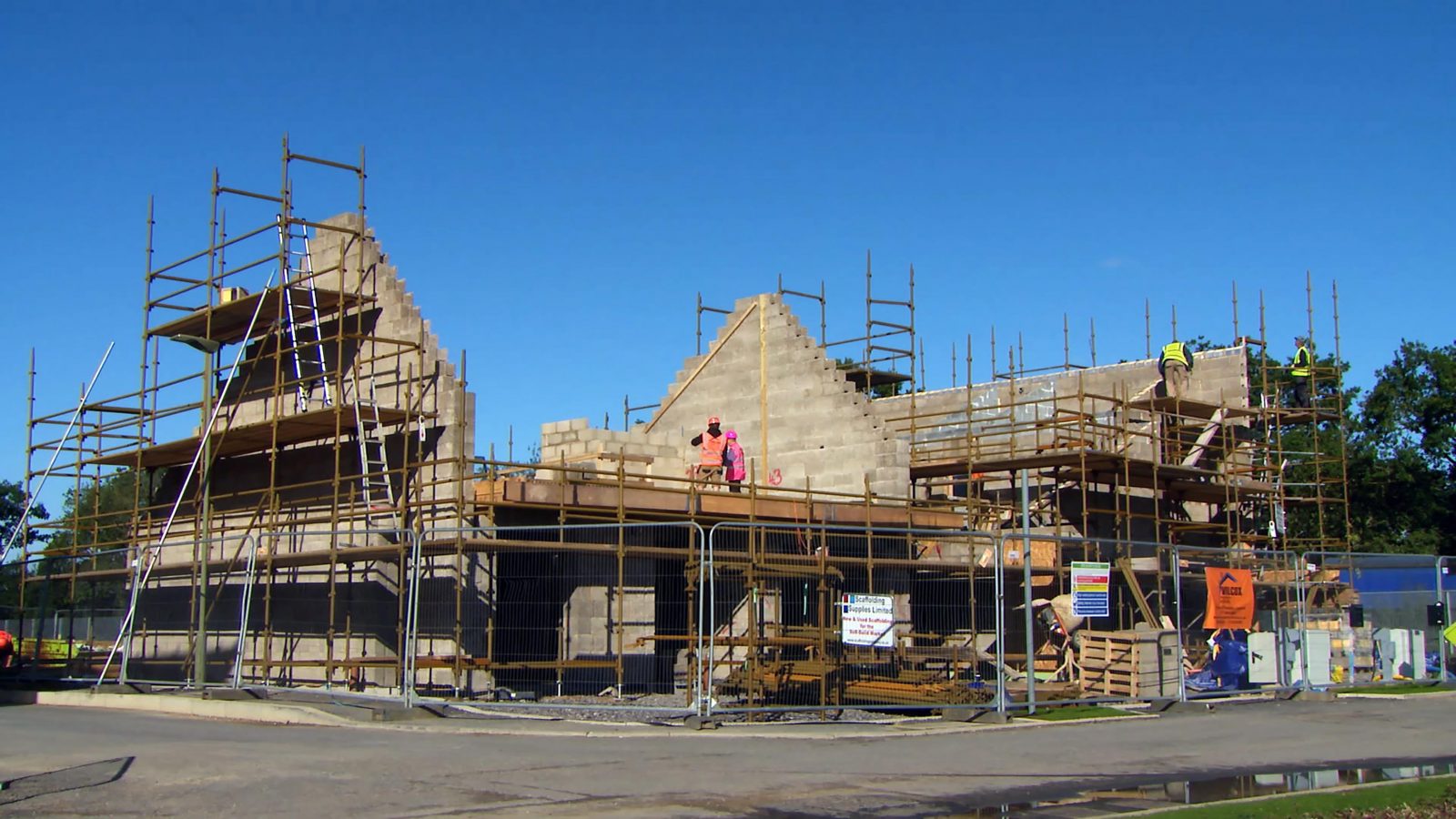
It’s very people based and very observational. We followed ten households, all of them from different walks of life, with different budgets and they’re probably at the lower end of what you would expect to see on Grand Designs.
These are more accessible projects costing anything from around £200,000 to £400,000, in terms of value, what they’re getting for their money is good architecture and homes that are really tailored to them – all with the lightest of planning!
Our pioneers are not people with large financial cushions to float on. Building for the first time brings with it a lot of financial, personal and emotional stress – which this series honestly reflects. Relationships get really tested and some fail.
I suppose we see a lot of that in Grand Designs, but goodness me I’ve never seen it so repeatedly and so intensely, as in this series.
These very different households all took a big risk but ultimately, I think they’ve been rewarded for this, with brilliant very individual homes and a great, wild-looking street – which is a sort-of test bed for self-build construction techniques, which I think is just brilliant. No two homes are the same.
I think two of the households stuck to budget, but self-build is a huge adventure in expression, in architecture, and in terms of discovering what it is that makes us happy and what we like from our environment. People talk about going over budget as if it’s this great cardinal sin, whereas, it usually results as a part of the process because people on the way discover things. On The Street one family wanted a dining room on the first floor, in another household Garrie alters the layout to better suit his wife Sue who’s disabled.
Sometimes building just takes you somewhere that’s far more exciting than you dreamt it would be. Peter and Anita and their teenagers Sam and Lucy, who [and self building]
gave them a larger kitchen, open plan living areas as well as cleverly designed spaces for individuals to retreat to do their own thing. Very important with teenagers – and unthinkable in their previous home.
They did all this and stuck to budget but towards the end of the project Peter realised, he could put an extra bedroom in the attic, and with their two kids it just seemed an obvious thing to do. Suddenly they were discovering what the process of design is. Financially their story was inspiring, the finished house ended up costing almost half as much as it would cost to buy something similar in the area.
It’s really hard for me to disassociate people and their stories from the building. For example, there’s the story of Lynn (pictured) and her house, which is sort of raw with problems. She experienced a great deal of bad luck and it’s very hard not to feel sorry for her, but she emerges in the series with a very beautiful building. It’s one of my favourite buildings, because it’s so eccentric.
The material, Hempcrete, isn’t common, but it’s certainly earned its pedigree in the UK. It’s a mixture of hemp, which is the stuff they use on the floor of equestrian arenas and is like finely chipped bark and lime. When mixed with water and lime it forms a kind of eco concrete, the texture of horse poo, which you stuff in-between shuttering. The entire house is built from this stuff – it’s highly insulating, structurally sound, has high thermal mass and locks carbon into a building.
Paul and Blanka slogged and crafted most of this house with their bare hands, occasionally with the help of friends and family. When things got really tough, the street lent a hand too, so it’s been very collaborative at times. It’s a house built from friendship really and has a very cool vibe about it. It’s also a beautifully crafted building and a house jam-packed with some very cutting-edge eco-gadgetry which I was fascinated by.
I think it’s because our relationships are defined in many ways, both emotionally and structurally. Relationships are sometimes defined with ambitions and dreams, and so to dream of a home together is a huge thing.
Some of the younger couples on the project have moving stories, for example Jack and Hannah, who worked so hard and lived with his Mum to save money on rent.
I think what you realise is just as the dream and the hope of that new home is so very strong it can be a very disconcerting experience when you’re living between houses, in a sort of limbo. It’s all a reminder of how home for us is a very powerful idea.
In terms of it being physically tough, Terry on plot 1 lost a huge amount of weight through self-building and overcame his diabetes. I saw Paul on plot 4 morph from a human rights lawyer into a builder and I witnessed Lynn, who’s 63, lugging huge blocks around on the hottest day of the year.
Although the planning process was streamlined, they still had to deal with the planners, local council, and building control. This is before they even started building. It was a long list. No one has ever said self-build is easy.
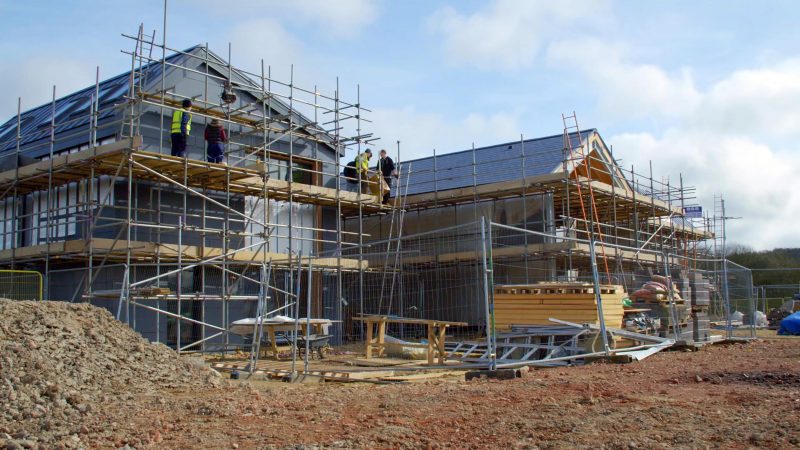
I once said to a self-builder, an artist: ‘you are extraordinary people for self-building’. She replied, correcting me: ‘no, we’re ordinary people just doing an extraordinary thing’.
It’s the idea that you take ordinary people who have got this slight glint of ambition and madness in their eye who say, ‘we can build a house, can’t we? How cool would that be?’ And before you know it, they’ve turned themselves into true radicals. I love that!
All of our pioneers – who started out as ordinary householders – have decided to build a home and they’re now all transformed as individuals and hugely empowered.
As this town of 1900 homes grows, they’re going to become the go-to gurus of how to build with Hempcrete, or how to deal with the mortgage company. They are the self-build wizards of Graven Hill, at once wise and magical.
I don’t always! I think for many people custom-build is a much safer route, which is where you work with an architect or developer who is building a house for you which is bespoke, but you’re removed from the day to day. However custom build can be more expensive.
Regardless, it’s always going to be stressful, it’s always going to be emotional, it’s always going to be harder than simply buying a home. Even buying a home isn’t that simple because all your hopes and dreams are invested in one idea, one transaction. It’s serious stuff.
The Pioneers all came with a mission to build a house for very personal reasons, but I was fascinated to see how well it all came together and how, in building a house, they could build a community, an astonishing achievement of which they should be proud.[the pioneers]
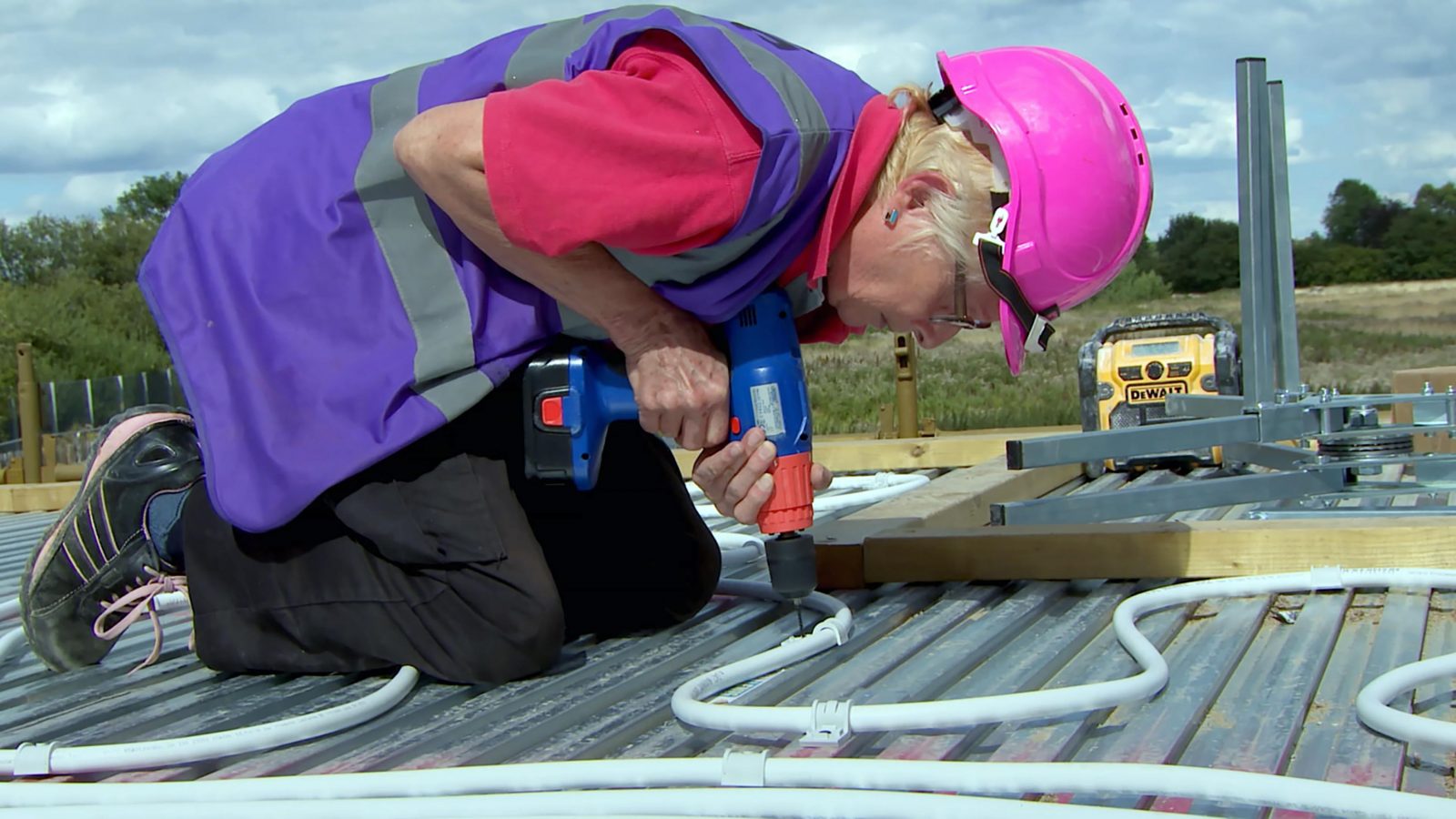
The thing that always surprises everybody is how long things take and what I’ve learnt in this series is there no such thing as an average or dull human being. Everyone has a story and usually a pretty fantastic one at that, and when we as a species are pushed out of our comfort zone, when the television is turned off and we are told to put our mobile phones down, all of us can rise to extraordinary levels of performance and adventure.
What I loved to see in this project was the transformation from a bare piece of brown field land next to a railway into a proper street and community. For the last five years the pioneers have slogged away, and they’ve got to know each other so well as a result, some have formed strong new friendships. It is sobering to think that they have spun all this invisible social glue; that this is just the beginning of something.
I think most people believe because they put up a shelf, they can build a house. Or because they have managed a marketing team, they can manage a team of builders, and that’s not always the case.
Better sometimes to be a good engaged helpful client who devotes time to thinking things through and making the thousands of necessary decision well. Better to have time to buy and bring the bacon sandwiches to site in the morning.
There’s a paradox right at the heart of building that explains why projects overrun and go over budget. It lies in the fact that people have ambitions, dreams and hopes; we’re not machines or spreadsheets.
We invest all our energies in the risk of one big idea which is both the most daring aspect of any project, and at the same time, the most glorious. We push and fight for the quality of that idea and that is what makes Grand Designs so watchable and compelling. It is the force that makes architecture happen.
Kevin McCloud brings self and custom build homes to the fore with his latest offering, Grand Designs: The Street. The programme follows the fortunes of 10 self-builders acting as the pioneers for Graven Hill in Oxfordshire, the largest custom and self build site in the UK. The 10 homes are delivered as self builds using a serviced-plot model.
The site, on former Ministry of Defence land, was originally an initiative of Cherwell District Council, which used a special Local Development Order to pave the way for 1,900 homes delivered over ten years, with the majority delivered by the routes.
The six-part series follows the pioneers, who have been building on the site over the last five years, and were the first to build at Graven Hill.
Effectively the neighbours are creating a whole new street – which is arguably the future for many who want to self build, with serviced plots on multiple plot sites meaning that they’re building and ultimately living with like-minded neighbours.
Where the serviced plots make this easier is some form of planning permission is already granted, the roads and services are put in and the wider landscaping is the job of the development company responsible for the whole site.
This then frees the public up to design and build their house, either by custom build, where they work with a company that arranges all the work, or self build where they commission all the individual aspects themselves – and maybe even do a bit of the work on a DIY basis.
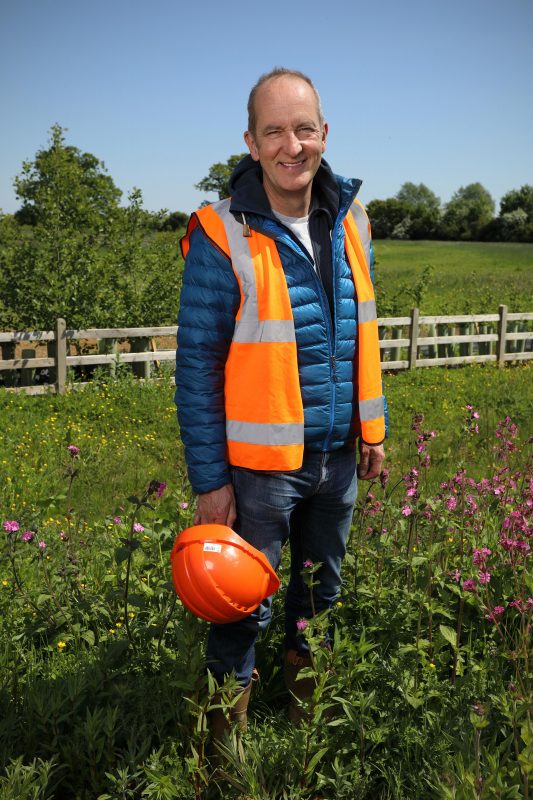
Kevin McCloud
“I think for many people custom-build is a much safer route, which is where you work with an architect or developer who is building a house for you which is bespoke, but you’re removed from the day to day. However custom build can be more expensive,” says Kevin.
The pioneers were lucky enough to scoop up their plots for around £100,000 each, with build costs estimated at around £250,000. However, as with all things Grand Designs, what people expected to build for, and what they actually spend after all the upgrades and issues are taken account of is often at odds.
As Kevin explains: “People talk about going over budget as if it’s this great cardinal sin, whereas, it usually results as a part of the process because people on the way discover things: on the Street one family wanted a dining room on the first floor, in another household Garrie alters the layout to better suit his wife Sue who’s disabled.”
With the age ranges of 24-72 and budgets varying between £160,000 and £500,000, the programme really demonstrates that anyone can self build. As Kevin says, “what they’re getting for their money is good architecture and homes that are really tailored to them – all with the lightest of planning!”
“These very different households all took a big risk but ultimately, I think they’ve been rewarded for this, with brilliant very individual homes and a great, wild-looking street – which is a sort-of test bed for self-build construction techniques which I think is just brilliant. No two homes are the same,” he says.
National Custom and Self Build Association – sharing experiences
Kevin got interested in the idea of self building on a large site after a NaCSBA-led trip to the Netherlands, to see Almere, a ground breaking self-build town, which was also the trip that inspired Cherwell District Council to first look into the idea of self building at scale.
Graven Hill has more than just self and custom build homes, as it is piloting new and interesting routes to home owners, such as customised terraces, small entry-level homes (called Coach Houses) and community-led projects. This makes it a truly new and diverse way to approach housing, something that could be an exemplar for other local authorities to follow.